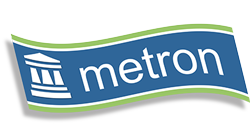CMG (Computer Measurement Group) remains the premier forum for sharing capacity management experience and the best form of cost-effective capacity management training. Metron is proud to have been actively involved with CMG for so many years. But perhaps there is an issue in that phrase: ‘so many years’. Whenever I am at a CMG event, the average age of those involved is high, the number of people with grey hair or very little hair equally so. Age tends to bring experience, and hopefully some wisdom with it, so the more senior nature of CMG should have value.
Is there an issue then, with CMG having an aging membership? Certainly when I was first involved many years ago, many of the same people were involved as are working with CMG now, but they were a lot younger. They had less experience then, perhaps less wisdom, but still possessed a huge pool of knowledge about capacity management.
The question that came to my mind was whether or not this pool of knowledge is relevant to today’s young sys admins looking after more recent technologies such as VMware? It came to my mind when playing 5-a-side soccer for the first time in 30 years, watching a colleague’s 16 year old son running around like a whirling dervish as I gasped for breath, lungs close to bursting. I was the CMG-er, he was the VMware sys admin.An hour later, groin strained, lungs still fit to burst, various other aches and pains fast appearing, I realized I hadn’t disgraced myself. Sure, he could run further and faster, but I’d known enough to anticipate, see moves developing and get myself in the right place at the right time to contribute.
I see it as the same for aging CMG-er’s like myself. The capacity management game might have changed with successive technologies. Applications can be rolled out faster, technology is more flexible and can be changed more quickly. Some things remain the same however. Hardware still costs money and money can be wasted – look at how this happened with distributed technology and server sprawl over the last 10+ years.
Poor capacity management can still lead to service level problems. So much of what we have learnt over the last 30+ years is still of value to those who have come into the industry in more recent times – but do they listen? Do we communicate this in the right way?The reverse is true. Still at CMG I see people keen to hang on to doing things ‘the old way’, saying that we did this on the mainframe 30 years ago. Sometimes this is true, but sometimes it’s not. There might have been virtual technology on the mainframe for a considerable period of time, but it’s configurability and it’s manageability were very different to what’s available to the new generation with VMware, Xen and UNIX virtualization.
The capabilities of each new technology should teach us something new about how to manage capacity.So, I could save my colleague’s young son some running around by teaching him some of the things about soccer I have never forgotten from younger days. Likewise he can teach me something about how to keep up with the faster pace of the game today.
What knowledge do you think that experienced capacity management people, archetypal CMG-er’s, can pass on to the speed freaks of modern technologies? How does this learning need to be presented to get a hearing?Likewise, what should the old school be listening to from the new generation? How can we advance our capacity management knowledge by better understanding the perspective of each new generation of sys admins?
I am old (and tired, and aching from the soccer) but hopefully never too old to learn, so it would be great to hear your opinions/comments.Andrew Smith
Chief Sales & Marketing Officer